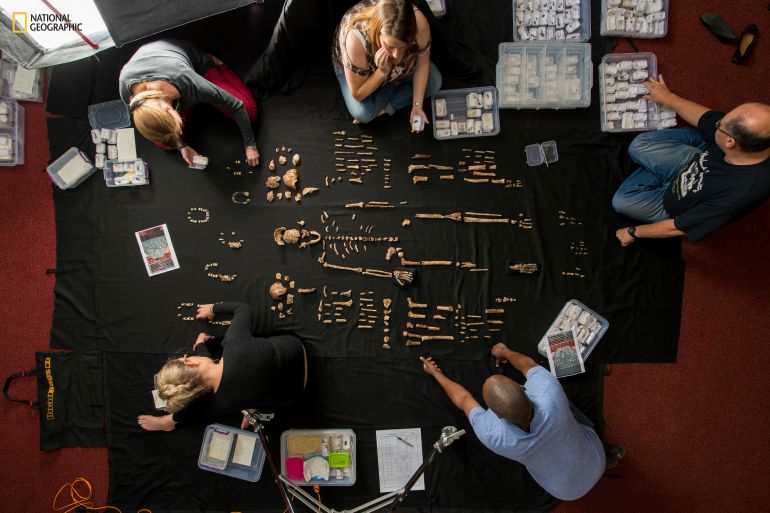Wed 07 June 2023:
Scientists have discovered what they claim to be the world’s oldest burial site in South Africa, containing the remains of a small-brained distant ancestor of humans who they believe buried their dead, perhaps forcing a revision of current theories.
In the initial findings some years ago, scientists thought that the small-brained distant relatives of humans discovered in South Africa’s Rising Star cave system, known as Homo naledi, a tree-climbing, Stone Age hominid, were not capable of complex behavior such as burying their dead.

“These findings could be some of the earliest examples of mortuary practices and meaning-making by a small-brained hominin, thus altering our understanding of human evolution,” paleoanthropologist and National Geographic Society Explorer-in-Residence Lee Berger, who led the team, said on Monday.

Berger and his research team, which included Keneiloe Molopyane and Augustin Fuentes, identified depressions deep in the chambers of the Rising Star cave system, located at the Cradle of Humankind, a UNESCO world heritage site 48 kilometers (30 miles) from Johannesburg.

“Bodies of H. naledi adults and several children estimated to be younger than 13 years of age were deposited in fetal positions, which suggests intentional burial of the dead,” the dig team said.
The Rising Star cave system in South Africa has one of the earliest known burials sites of Homo sapiens – our own species – dating back least 100,000 years, but the Homo naledi sites are far older. Homo naledi had brains about one-third the size of the human brain, and the discovery could force a new understanding of the roots of such symbolic and spiritual acts.

Researchers lay out fossils of Homo naledi at the University of the Witwatersrand’s Evolutionary Studies Institute in Johannesburg, South Africa [File: Robert Clark/National Geographic via AP]
The research, funded by the National Geographic Society, has yet to be peer reviewed.
Seven years ago, South African scientists announced the discovery of the richest fossil hominin site on the continent, unveiling a new species named Homo naledi.

Paleoanthropologist Lee Berger.
What is Homo naledi?
Homo naledi is a primitive species at the crossroads between apes and modern humans, which had brains about the size of oranges and stood about five feet tall. AFP reported the species had curved fingers and toes, and tool-wielding hands and feet made for walking.
The species is named after the “Rising Star” cave system where the first bones were found in 2013.
Engravings forming geometrical shapes, including a “rough hashtag figure”, were also found on the purposely smoothed surfaces of a cave pillar nearby.

Speaking to AFP, Lee Berger said “That would mean not only are humans not unique in the development of symbolic practices, but may not have even invented such behaviours.”
Such a statement is likely to ruffle some feathers in the world of palaeontology, where Berger has previously faced accusations of lacking scientific rigour and rushing to conclusions.

Paleoanthropologist Lee Berger.
In 2015, Berger first suggested the idea that Homo naledi was capable of more than the size of its head suggested. “That was too much for scientists to take at that time. We think it’s all tied up with this big brain,” he said. “We’re about to tell the world that’s not true.”
SOURCE: INDEPENDENT PRESS AND NEWS AGENCIES
______________________________________________________________
FOLLOW INDEPENDENT PRESS:
TWITTER (CLICK HERE)
https://twitter.com/IpIndependent
FACEBOOK (CLICK HERE)
https://web.facebook.com/ipindependent
Think your friends would be interested? Share this story!





